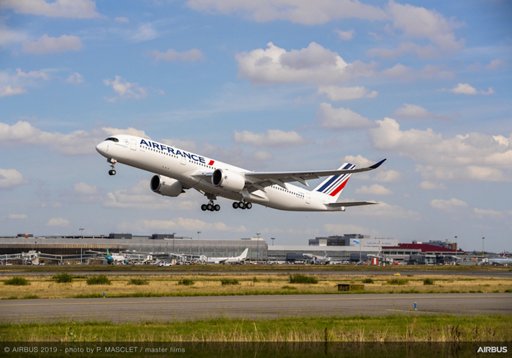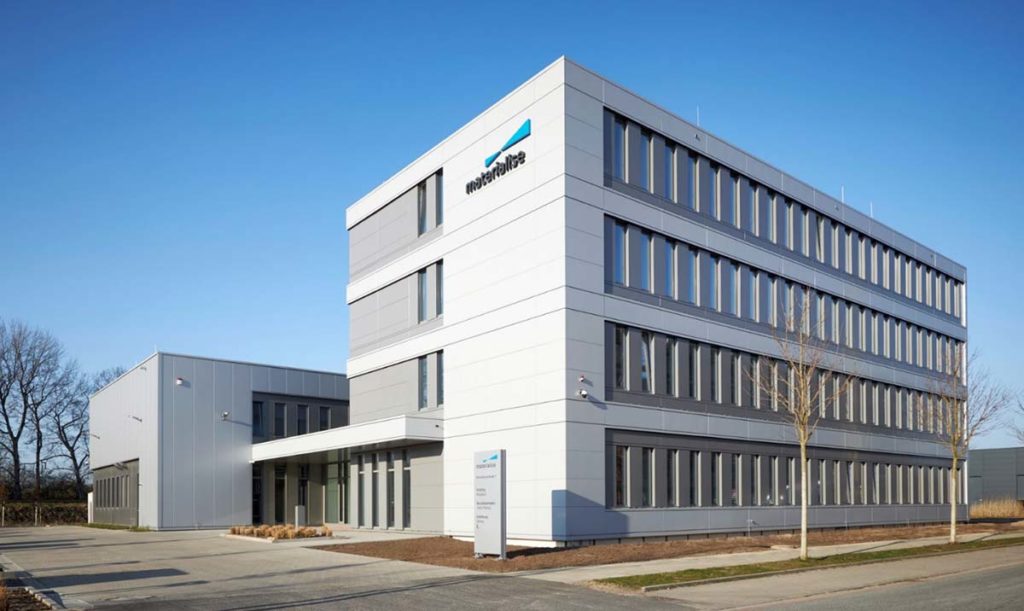Materialise (Nasdaq: MTLS) has qualified EOS’ PA 2241 FR flame retardant polyamide 12 material for Airbus. From now on, under Airbus Process Specification AIPS 03-07-022, Airbus or its suppliers can order parts in this material from Materialise, making the service bureau the first qualified for flight sintered parts for Airbus. Previously Materialise qualified SABIC’s 9085 ULTEM material, as well, for material extrusion.

“This achievement consolidates our long-term partnership with Airbus, and it also opens up additional 3D printing applications to Airbus and its suppliers. Laser sintering is one of the most widely used 3D printing technologies and enables complex design features such as interlocking mechanisms. It’s an honor for Materialise to be Airbus’s first manufacturer for the technology,” said Bart Van der Schueren, Materialise CTO.
Now, for powder bed fusion (PBF), Materialise can produce parts for the Airbus ecosystem on printers such as the huge EOS P770. The PA 2241 FR is also much more economical than other flight-possible materials, since it has a comparatively high refresh rate. If you’d sinter PEEK or ULTEM, for example, you’d have to toss all of the un-sintered powder, which is already more costly than the PA 12 FR powder. This makes sintering components for in cabin, in pantry, and on the aircraft accessible.
What’s more, ULTEM does not play well with jet fuel, so this could open up some more possibilities in this area, as well. For some uses, PA 12 off-gasses too much and it’s good news for the material (and its manufacturer, which is ultimately probably Evonik) that it is qualified for use in commercial aviation. The same certification also introduces possibilities in customization of aircraft cabin components for business jets and general aviation applications, which will open new markets for Materialise.
As described in the “Polymer Additive Manufacturing Markets and Applications: 2020-2029” report from SmarTech Analysis, in-cabin components are becoming an increasingly attractive application for 3D printing in aerospace. While material extrusion accounts for the vast majority of hardware revenues for aerospace, PBF is expected to catch up by the end of the decade, with PBF hardware sales projected to account for $270 million in revenue by 2029.
“We are very proud that after an extensive testing program, Airbus qualified the EOS PA 2241 FR material and processes for usage globally by the company. It underlines the high maturity and constant quality of EOS’ powder and systems and continues to emphasize the relevance of industrial 3D printing in both polymers and metals,” said Markus Glasser, Senior Vice President EMEA for EOS.
Materialise noted that it 3D prints about 100 individual part numbers for the Airbus A350, which adds up to approximately 26,000 annually for different A350 aircraft alone. However, the Belgian 3D printing bureau isn’t stopping there. It aims to 3D print components for such Airbus planes as the A320, A330 and A340.
This is an incredible achievement and many tens of thousands of hours of work have gone into making this achievement come about. The amount of work that you must undertake to flight qualify a new process and material is simply astounding. The amount of testing, validation, and process control that one must have is also huge. This is a great achievement for Materialise. Doing work on the A350 is already astounding, but by being qualified across Airbus, means their services can now be used in helicopters and many of the other products that AIrbus makes.

The business results should be encouraging for the publicly traded Belgium firm. At the same time, something like this is also a quality signifier for other people in 3D printing or looking for 3D printing services. One could easily say to oneself, “Well, if Materialise can do this for Airbus, they can make my part too.”
If you want to know what vision is, know this: when I worked at Materialise over a decade ago, people were working on trying to make sintered parts for aviation applications. Tenacity is an overlooked quality in firms. Its uncharacteristic of me to be so lyrically positive, but this is a great move for our industry and we should commend Materialise for making this possible.
Subscribe to Our Email Newsletter
Stay up-to-date on all the latest news from the 3D printing industry and receive information and offers from third party vendors.
You May Also Like
3D Printing Unpeeled: New Arkema Material for HP, Saddle and Macro MEMS
A new Arkema material for MJF is said to reduce costs per part by up to 25% and have an 85% reusability ratio. HP 3D HR PA 12 S has been...
3D Printing News Briefs, January 20, 2024: FDM, LPBF, Underwater 3D Printer, Racing, & More
We’re starting off with a process certification in today’s 3D Printing News Briefs, and then moving on to research about solute trapping, laser powder bed fusion, and then moving on...
3D Printing Webinar and Event Roundup: December 3, 2023
We’ve got plenty of events and webinars coming up for you this week! Quickparts is having a Manufacturing Roadshow, America Makes is holding a Member Town Hall, Stratafest makes two...
Formnext 2023 Day Three: Slam Dunk
I’m high—high on trade show. I’ve met numerous new faces and reconnected with old friends, creating an absolutely wonderful atmosphere. The excitement is palpable over several emerging developments. The high...
































